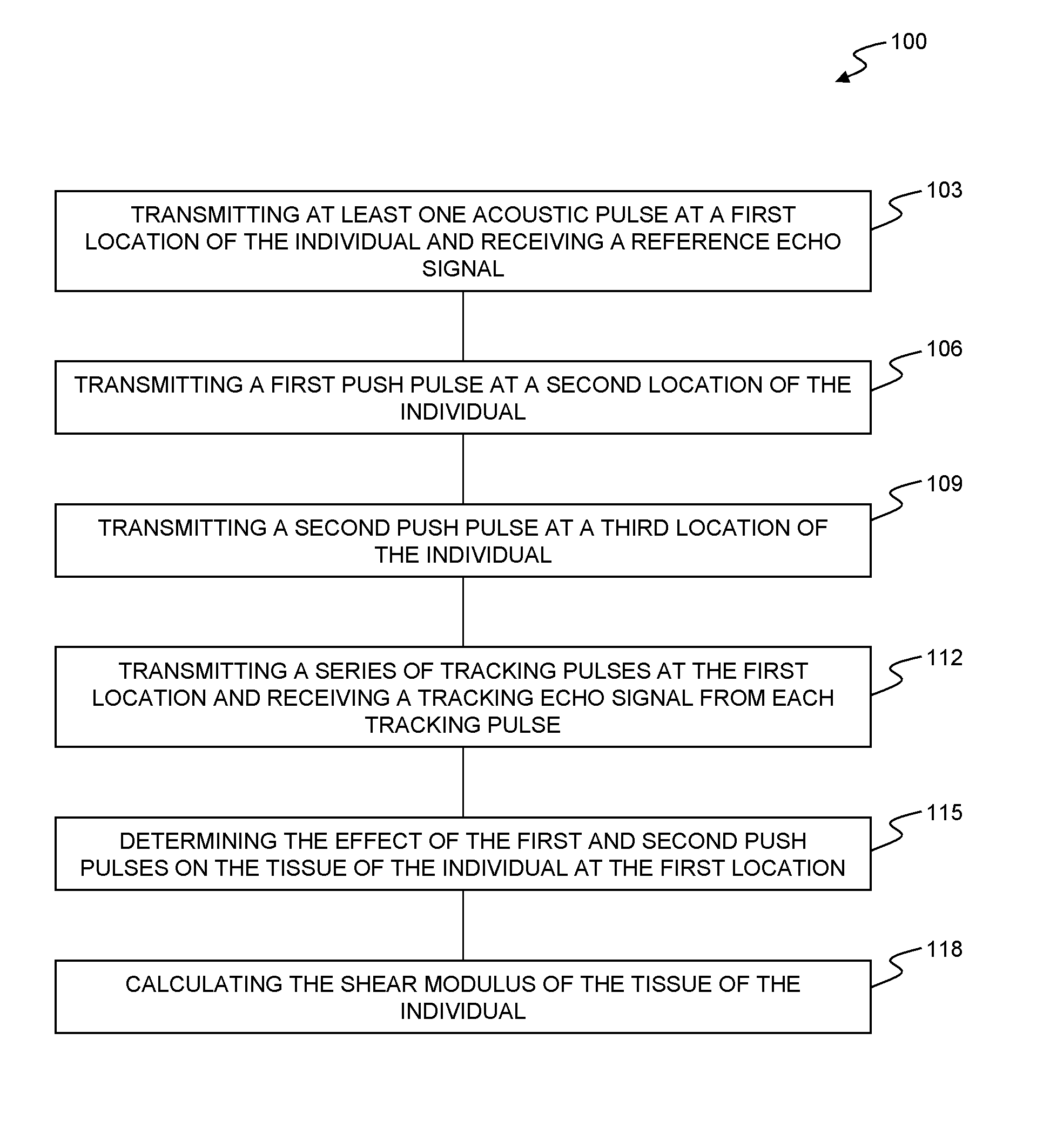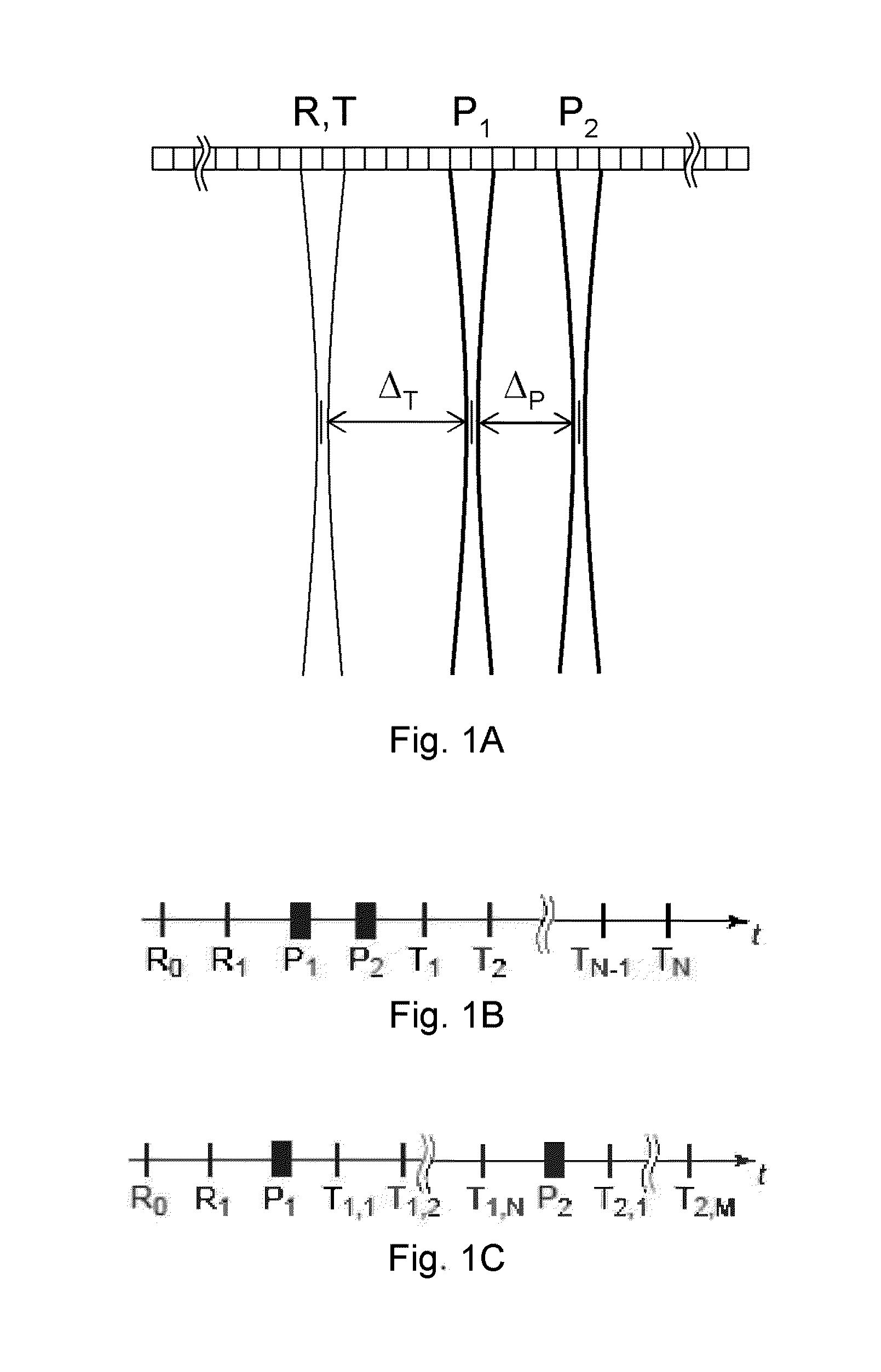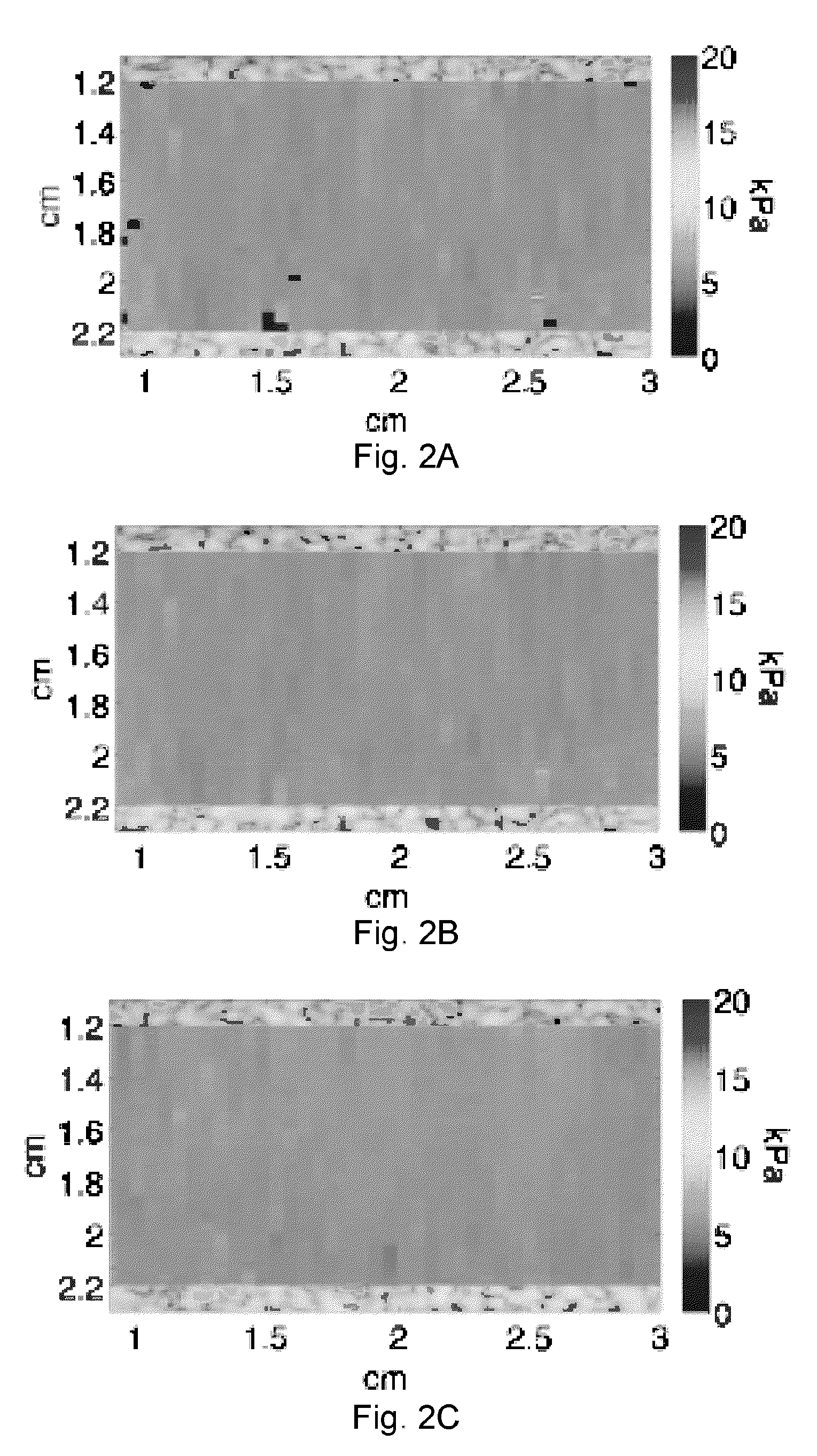Methods and systems for spatially modulated ultrasound radiation force imaging
a radiation force imaging and spatial modulation technology, applied in the field of ultrasonic imaging, can solve the problems of introducing a time delay between each spatial peak of the push beam, the viscoelastic nature of the tissue, and the dispersion effect complicating the application of smurf in strongly viscoelastic media, etc., to achieve the effect of convenient detection
- Summary
- Abstract
- Description
- Claims
- Application Information
AI Technical Summary
Benefits of technology
Problems solved by technology
Method used
Image
Examples
Embodiment Construction
[0045]In a method 100 according to an embodiment of the invention (FIG. 19) the shear modulus of a tissue of an individual may be determined. An acoustic pulse is transmitted 103 at a first location of the individual, and an echo signal is received to establish a reference echo signal. This transmit / receive ensemble may be, for example but not limited to, a standard B-mode ultrasound pulse and the corresponding echoes created by that pulse in the tissue. Two or more acoustic pulses may be used to determine the reference. A first push pulse is transmitted 106 at a second location of the individual. The first push pulse may cause a shear wave to be transmitted through the tissue. A second push pulse is transmitted 109 at a third location of the individual. The second push pulse may cause a shear wave to be transmitted through the tissue. The first push pulse, the second push pulse, or both push pulses may be formed by a 200 cycle toneburst having a center frequency of 4.21 MHz. The se...
PUM
 Login to View More
Login to View More Abstract
Description
Claims
Application Information
 Login to View More
Login to View More - R&D
- Intellectual Property
- Life Sciences
- Materials
- Tech Scout
- Unparalleled Data Quality
- Higher Quality Content
- 60% Fewer Hallucinations
Browse by: Latest US Patents, China's latest patents, Technical Efficacy Thesaurus, Application Domain, Technology Topic, Popular Technical Reports.
© 2025 PatSnap. All rights reserved.Legal|Privacy policy|Modern Slavery Act Transparency Statement|Sitemap|About US| Contact US: help@patsnap.com



